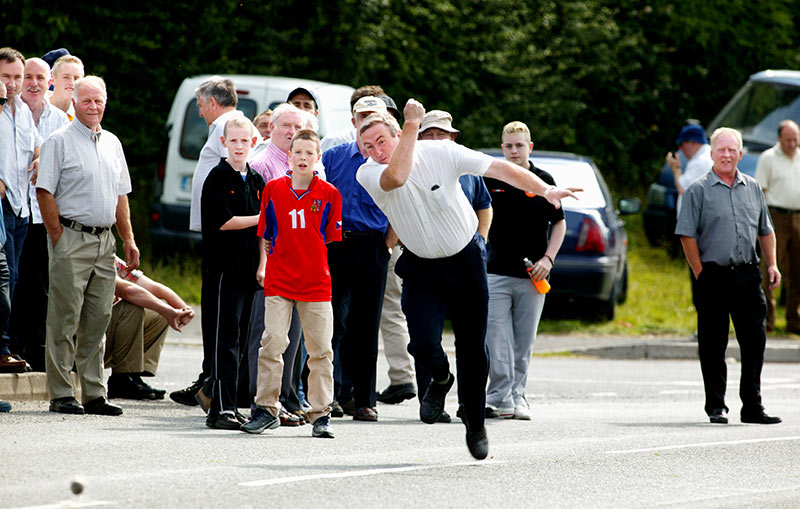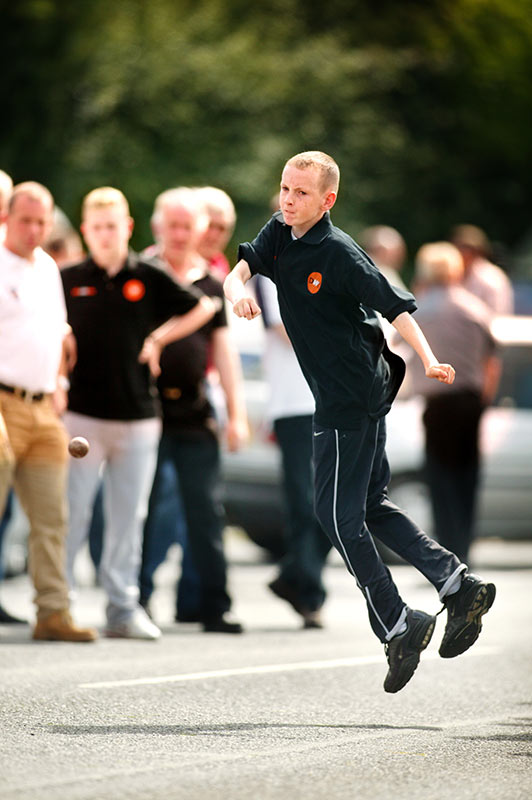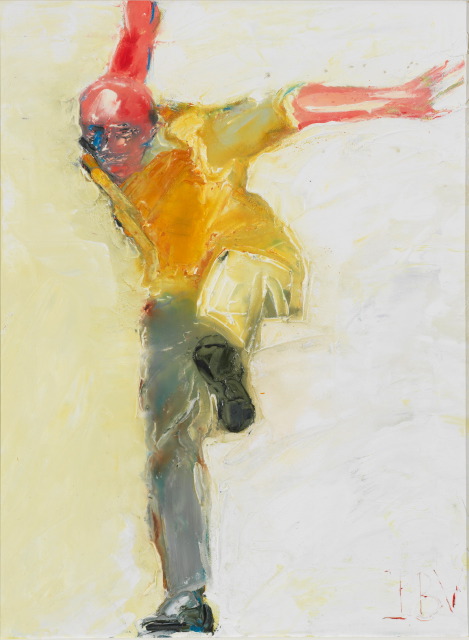Although this championship was only introduced in 1963, the sport goes back many centuries and probably originated in Armagh. While its origins go back much further, it has been suggested that the rules were influenced by north of England linen workers in the early years of Plantation, though such heresy is firmly rejected locally.
Road bowling was listed as a national Irish pastime back in the 1880s and placed alongside Gaelic football and hurling in national importance but in more recent times it has been mainly played in the counties of Armagh and Cork.
Although this is a sport for everyone – it is free to watch and there is no expensive uniform to lash out on – and there is no formal training, the skill levels are high. Local teams emerge from small townlands and villages, often with extended families at their core. Then there are regional teams and the really talented go on to the national team.
They play in all weathers, including lashing rain and heavy snow, only failing light preventing a contest. Youths, women and veterans all have their teams and, gradually, the sport is returning to its golden age of popularity as numbers grow year on year.
The great champions are venerated locally like the legends of soccer. They speak in awe of Armagh’s Danny McParland and his four All-Ireland wins, including the first in 1963, and Joe McVeigh’s record throws in 1955 on the Cathedral Road course in Armagh City.
People still talk about the famous loft (a throw that goes higher than normal) in the 1964 final when Cork’s Mick Barry hurled the ball around a corner in the road, clearing a pub, television aerial and telephone wires and landed nearly 100 yards away. That contest, narrowly won by McParland, was watched by an estimated 15,000 people!



